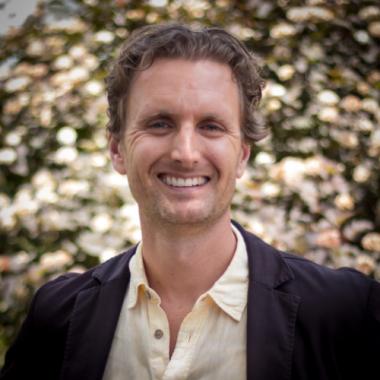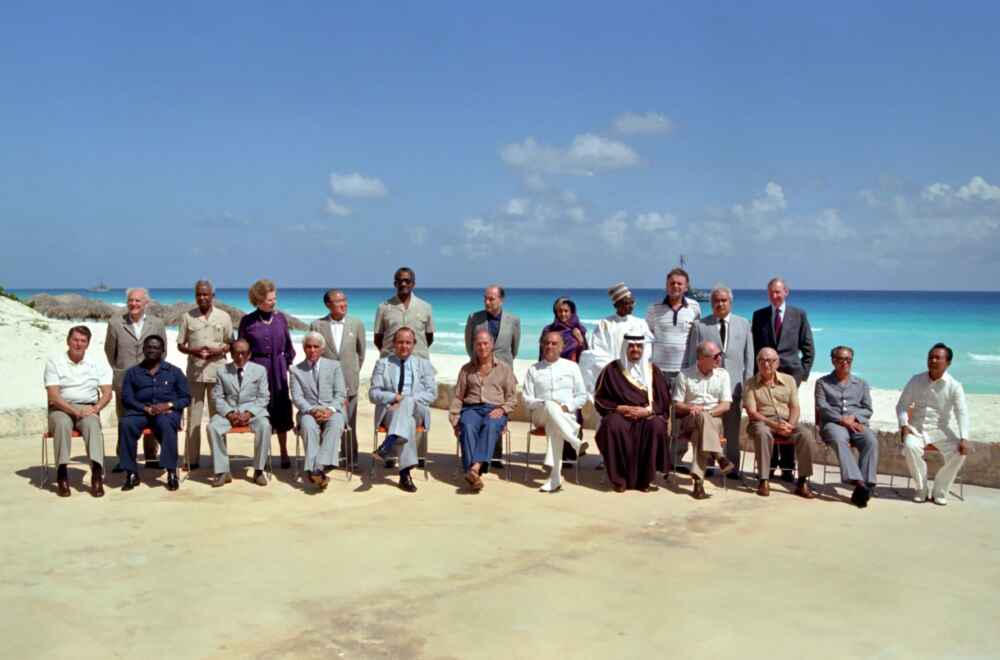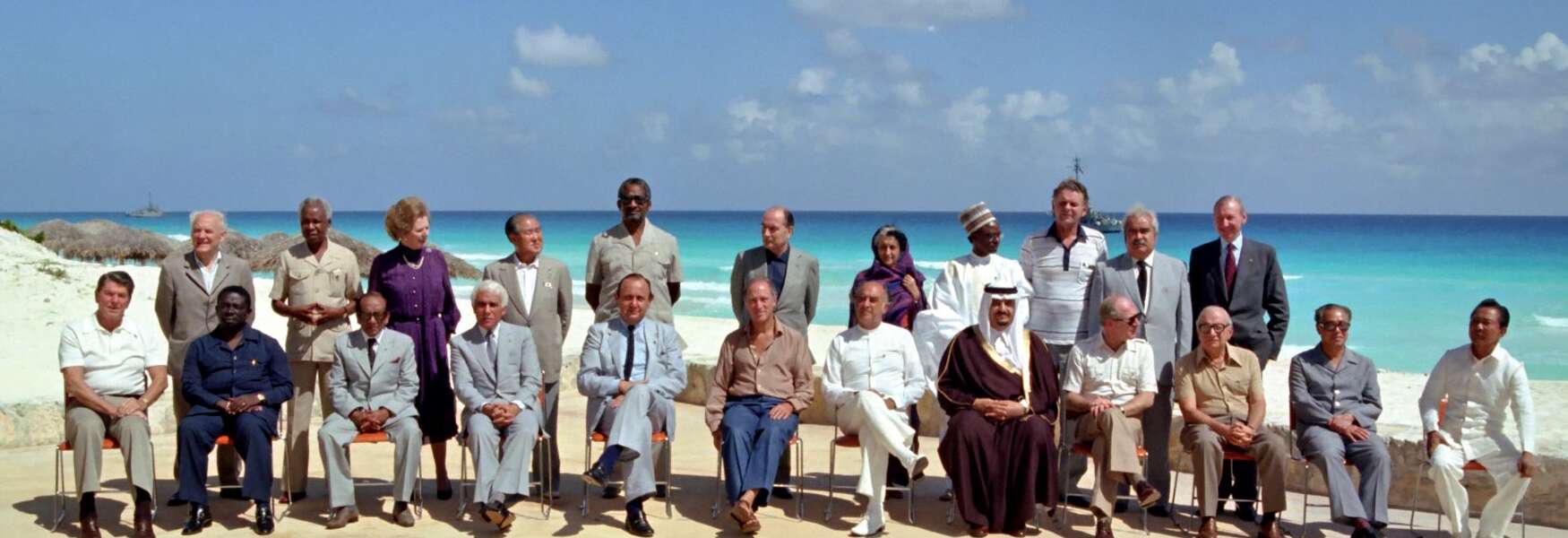By Dr. Adam Sneyd, Department of Political Science
This article is republished from The Conversation Canada under a Creative Commons licence. Read the original article.
Calls for a new approach to the management of global affairs intensified after the curtain came down on this year’s World Economic Forum (WEF) annual meeting held at Davos, Switzerland.
In the wake of the WEF’s headline-grabbing controversies about the legitimacy of WEF’s leadership and proposals for a new global economy, a movement seeking to renew the promise of global co-operation quietly re-emerged. Delegates from over 25 countries, organized by a group called Progressive International, assembled in Havana on Jan. 27 to declare their intent to build a New International Economic Order (NIEO) fit for the 21st century.
The Havana signatories are mobilizing around Cuba’s presidency of the Group of 77 at the UN. They aim to use Cuba’s platform to revive discussions about a NIEO in the General Assembly. This diverse group of researchers, government officials and activists intend to develop a new political vision for managing the world economy, in the face of several global crises, over the next 16 months.
They hope to enshrine their vision in a UN Declaration next year that would coincide with the 50th anniversary of the General Assembly’s adoption of the Declaration on the Establishment of a New International Economic Order.
The NIEO’s signatories seek to rebuild the collective power of emerging and developing countries within and beyond the UN system. They also support the creation of new governance institutions that would fundamentally transform the international system. In doing so, they are committed to proposing alternative ways to respond to international crises.
While this attempt to revamp global partnerships appears to be promising, at a time of overlapping global emergencies, the pitfalls are numerous.
The birth of the NIEO

The NIEO emerged in 1973 as the collective project of developing countries to transform the United Nations system. Its adherents were convinced that the international community’s insufficient response to several interlinked crises was undermining their interests.
In 1971, the unilateral U.S. decision to abandon the convertibility of U.S. dollars into gold left many countries with devalued dollars.
To navigate this inflationary context, and respond to U.S. policy during the 1973 Yom Kippur War, members of the Organization of the Petroleum Exporting Countries placed an embargo on oil exports to the U.S.
The ensuing oil price increase compounded an ongoing food security crisis and undercut the ambitious goals of the second UN Development Decade. Moreover, the ongoing threat of nuclear conflict, and an emerging awareness of unaddressed environmental challenges, heightened popular malaise about the adequacy of international institutions.
In the wake of these crises, the NIEO was formed. Building on the ambitious development agenda of leaders across the Global South, it included a comprehensive package of reform proposals.
Its Programme of Action sought to help countries exercise more control over their own natural resources. The NIEO package recognized that many developing countries had been structured by colonizers to export raw materials and its backers sought to remedy this condition.
Its advocates also pushed for new institutions to govern commodities and transnational corporations, and worked to speed up the transfer of technologies that would facilitate industrialization and end commodity dependence.
The NIEO’s stumbling block

(U.S. federal government/ Wikimedia)
After the General Assembly adopted the NIEO, efforts to implement the full package failed to gain traction. While the U.S. initially recognized some of the underlying challenges, it advocated an issue-by-issue approach to engaging with the action program.
Negotiation processes on individual components of the NIEO subsequently multiplied. This fragmentation taxed the capacity of developing countries and contributed to undermining their unity.
Soon after, opinions on the program’s components polarized, and dialogue reached a contentious impasse. An independent commission was then struck to resolve the conflict that had emerged between the Global North and the Global South over the NIEO.
By the early 1980s, as interest rates rose and a global debt crisis loomed, some of the NIEO’s biggest champions had died or lost political power.
The initiative ebbed after U.S. President Ronald Reagan declared an end to the search for new international institutions in his address to delegates at the International Meeting on Cooperation and Development held in Cancun on Oct. 22, 1981.
And now, 50 years later, we are facing yet another set of intersecting crises with woefully inadequate global responses.
Ongoing global challenges, including the public health crisis, global food insecurity, geopolitical conflicts and the climate emergency, are once again outstripping the response capacity of the UN.
Back to the future?
The NIEO’s faltering trajectory offers several lessons that must not be forgotten as pressure to renovate global institutions intensifies.
For starters, any proposed renewal of the NIEO must recognize that the original effort went off the rails after the full package was broken up. A case can be made that more substantive results could have been achieved had the program proceeded as an indivisible single undertaking.
The NIEO also served as a rallying cry that enabled numerous despots and authoritarians to sound like change-makers on the global stage, even as they repressed their people and looted state coffers. Today’s reformers must achieve a better balance between talking the talk at global gatherings and walking the walk for their people.
Moreover, the NIEO never seriously engaged with concerns about the environment. Countries that depend on commodity exports have an interest in taking arguments about the need to downscale humanity’s material footprint seriously. They must think creatively about possible futures that discard the unsustainable pursuit of infinite growth, and act boldly to end the climate emergency.
As the chorus of voices challenging the global governance status quo swells, a NIEO revival will make a difference if it moves beyond nostalgia.
While the ideological conflicts that plagued the initial drive for a new order could easily undermine the current effort, the fact that idealists and realists are uniting to build genuine paths to a world beyond the WEF is refreshing. Whatever our individual politics, we should watch this space.
